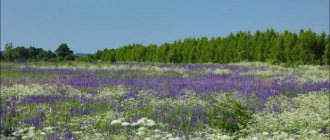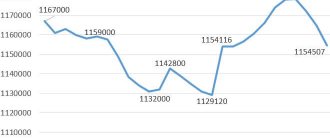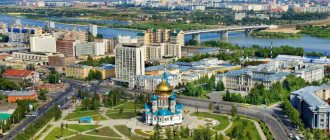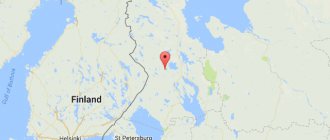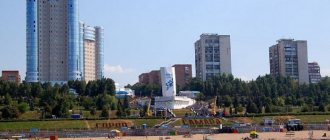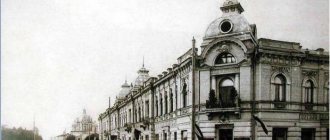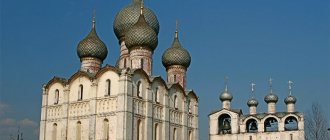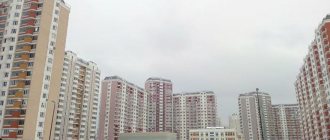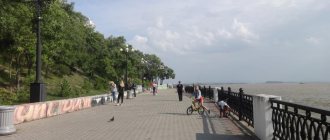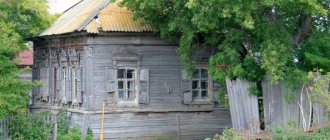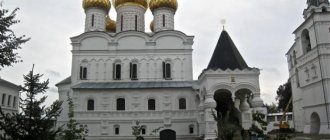How many people live in the city of Orenburg, what is the population as of January 1, 2022, what number of people live officially, is it increasing or decreasing in municipal areas, growing or vice versa, decreasing, decreasing and where?
Statistics have always interested people and no matter what it concerns, and we are interested in it for a variety of reasons, out of curiosity and for other, very different reasons, we want to know about something, for example, about a given topic, which we will deal with below.
Residents of the Orenburg region
The population of the Orenburg region has been steadily declining in recent years. Moreover, it grew until the mid-90s. It reached its peak in 1996, when the region’s population was 2 million 218 thousand 52 people. Since then, the population of the Orenburg region has been decreasing every year. Over 20 years, the loss amounted to about 30 thousand people.
In general, statistics on this area in Russia have been kept since 1897. Then in Orenburg and other cities, towns and villages, when asked how much is the population in the Orenburg region, statisticians gave fairly accurate figures. A total of 1 million 600 thousand 145 people were registered.
Orenburg population census, how many people live on January 1?
What is the official population of Orenburg for 2022, how many people live according to the census, how many people are in urban areas as of January 1, trends in profit and loss, whether their number is increasing or decreasing, such questions are of interest to many and we will try to get answers to them.
The city of Orenburg with all its administrative districts is part of the Russian Federation, the administrative center of the Orenburg region, and forms a municipal entity with the status of an urban district.
We will look into the population of the city of Orenburg, how many people live as of January 1, 2022, and how many people officially live in urban areas.
Fertility dynamics
The number of births in the Orenburg region per 1 thousand population is 14.6 people. A significant increase in this indicator began in the early 2000s. So, if in 1999 there were 9.1 children born per thousand inhabitants, then after three years this figure increased by more than one and a half units.
The constant increase in the birth rate in the region continued until 2010, when it amounted to 14.1 children per thousand inhabitants. After this, successful years alternate with unsuccessful ones in terms of fertility.
Population gain or loss according to the census
The total and official population of the city of Orenburg, how many people live in it as of January 1, 2022, the number of people in each individual city district and municipality, further in the second table.
| Year | Growth/decrease population city of Orenburg |
| 2017 | ↗564,443 people |
| 2018 | ↗564,773 people |
| 2019 | ↗565,341 people |
| 2020 | ↗572,188 people |
| 2021 | ↗572,819 people |
| 2022 |
Dynamics of mortality
In general, mortality in the Orenburg region has been increasing in recent years. This, of course, is reflected in the current population of the Orenburg region.
Scrupulous mortality statistics have been kept since 1970. Then 7.9 people died per thousand inhabitants. Since then, the number of deaths has increased every year. In 2005, this figure almost doubled and amounted to 15 and a half deaths per thousand inhabitants. In recent years, close attention has been paid to healthcare in the region, as well as throughout the country. Therefore, the statistics were able to stabilize. According to the latest data from Rosstat, 14.2 people die every year per thousand Orenburg residents.
Population in municipal, urban areas
The city is located in the Southern Urals, on the Ural (Yaik) River, near the confluence of the Sakmara River.
There are different versions of the origin of the name Orenburg. The classic version is that this is a fortress on the Or River. The author of the phrase Orenburg, in all likelihood, is the founder of the city, I.K. Kirilov.
According to a number of sources, it is not entirely located in Europe. On the pedestrian bridge over the Ural River stands a symbolic historical sign of the border between Europe and Asia.
The climate of Orenburg is moderate continental, turning into sharply continental.
Now we will tell those interested in the climate in the city of Orenburg, what the average temperature was according to research over the past few years, the maximum and minimum values, as well as the average and norms of precipitation:
Climate of Orenburg (weather, precipitation)
| Index | Jan. | Feb. | March | Apr. | May | June | July | Aug. | Sep. | Oct. | Nov. | Dec. | Year |
| Abs. Max. | 4,7 | 5,8 | 18,9 | 31,3 | 36,5 | 40 | 42 | 40,9 | 38,0 | 27,0 | 19,2 | 8,1 | 42 |
| Avg. Max. | −8 | −7,2 | −0,8 | 12,8 | 22,1 | 27,5 | 29,0 | 27,4 | 20,9 | 11,2 | 0,3 | −5,9 | 10,8 |
| Avg. pace. | −11,8 | −11,5 | −5,2 | 6,9 | 15,2 | 20,6 | 22,3 | 20,3 | 14,0 | 5,9 | −3,2 | −9,5 | 5,3 |
| Avg. min. | −15,5 | −15,7 | −9,3 | 1,7 | 8,5 | 13,8 | 15,6 | 13,6 | 7,9 | 1,6 | −6,1 | −13,1 | 0,3 |
| Abs. min. | −43,2 | −40,1 | −36,8 | −26 | −5,7 | −1 | 4,9 | −1 | −5,3 | −19,8 | −35,7 | −39,2 | −43,2 |
| Norm of siege. | 29 | 22 | 25 | 28 | 30 | 36 | 41 | 29 | 26 | 34 | 33 | 31 | 364 |
Whether the population of the city of Orenburg is decreasing or increasing, what is its official number according to the census as of January 1, 2022, in its municipalities, urban areas, we will learn about this later, when accurate information appears, but for now we will present the currently available figures.
Date of foundation of Orenburg: 1743
Time zone: MSK +2, UTS +5
Districts of the Orenburg region
The population of the Orenburg region is distributed over 35 districts. Among them there are also leaders and laggards in terms of the number of residents. Municipalities that have industrial production and prospects for development and investment are developing more intensively than others. People from backward areas leave en masse every year for Orenburg and neighboring regions.
The population of the districts of the Orenburg region has, for the most part, been declining in recent years. The leader is the Pervomaisky district with its capital in the village of Pervomaisky. Almost 90 thousand people live here. At the same time, the main economy of the region is the development of agricultural products. Pervomaysky specializes in meat and dairy farming and grain growing. There are 18 large and medium-sized agricultural enterprises in the region, as well as almost one hundred peasant farms. There is also industry in the area. The oil industry is developed here. About 800 kilometers of gas pipelines have been laid across the Pervomaisky district.
Among the lagging behind is the Matveevsky district, located in the northeast of the region. Only 11 thousand 209 people live here. The administrative center is the village of Matveevka. Only agriculture is developing in the area. The enterprises specialize in growing potatoes and sunflowers. There are three cooperatives (analogues of Soviet collective farms) and several individual entrepreneurs in the area.
In general, the Orenburg region is a dynamically developing Russian region. It ranks fourth among the oil-producing regions of Russia. It accounts for 4.5% of all oil produced in Russia. Therefore, it is not surprising that the fuel industry is the leading industry. Most of the oil fields are concentrated in the already mentioned Pervomaisky district, as well as in Sorochinsky and Kurmanaevsky.
Oil, which the Orenburg region is rich in, is a fundamental part of the Volga-Ural reserves of this mineral. The development of oil fields in these places began in the 30s of the 20th century near the city of Buguruslan. Nowadays, oil-bearing areas are regularly expanding.
Cities of the Orenburg region
The cities of the Orenburg region are significantly larger in population than rural areas. Almost 580 thousand people live in the regional center. There are 21 cities in the Orenburg region.
Large settlements, in addition to Orenburg, are Orsk (235 thousand inhabitants), Novotroitsk (96 thousand) and Buzuluk (85 thousand).
Industrial production is developed in Orsk. There are enterprises in mechanical engineering, oil refining, non-ferrous metallurgy, geological exploration, energy, construction and the food industry.
The economy of Novotroitsk is built on companies engaged in the manufacturing industry, metallurgy, waste and scrap metal processing, and food production. The city-forming company is Ural Steel OJSC. This is the largest metallurgical plant.
In Buzuluk in the 60s of the last century, oil fields were actively developed. The enterprises even managed to enter the international market, and Buzuluk was called the oil capital of the Orenburg region. However, in the last ten years there has been practically nothing left of the industry. A large furniture factory has closed, machine-building factories have gone bankrupt, and oil and gas production enterprises have seen a decline in oil production. Therefore, Buzuluk now remains one of the most depressed cities in the entire region.
Orenburg
The main population of the cities of the Orenburg region is concentrated in the regional capital. More than a quarter of all residents of the region are registered here.
The city was founded in 1743 on the site of the Berd fortress. Today Orenburg has a well-developed economy. Industry is based on the gas production and gas processing industries, as well as metal processing and mechanical engineering. There are enterprises in the chemical, light and food industries.
Among the unique enterprises, it is necessary to highlight OJSC Orenshal, which produces the famous Orenburg down scarves; in addition to it, there is also a plant for Orenburg scarves. produces agricultural machinery.
Since the beginning of the 21st century, the situation in Orenburg has stabilized after the crisis of the 90s. The economic success of the city is largely related to the successful development of the Gazprom Dobycha Orenburg enterprise.
Orenburg University began active construction of new buildings, modern sports facilities and the ethnographic complex “National Village” appeared.
Composition of the population of the Orenburg region
The majority of residents of the Orenburg region are Russian by nationality. Their number is about 75%. In second place are Tatars - almost 7.5% of the inhabitants of this nationality in the region; in third place are Kazakhs - almost 6%.
More than two percent of the region is inhabited by Ukrainians and Bashkirs. Slightly less than two percent of representatives of Mordovian nationality.
The number of other residents of the region does not exceed 1%. About one and a half percent of residents during the last census refused to indicate their nationality.
Indigenous people of the Orenburg region
Initially, the population of the Orenburg region was formed by the Tatars. Now there are about 150 thousand of them left in the region. The Tatars were the indigenous inhabitants of the Orenburg region. Now they live compactly in several districts - Abdulinsky, Buguruslansky, Krasnogvardeysky, Matveevsky, Tashlinsky and Sharlyksky.
In total, there are almost 90 Tatar settlements in the region, where the number of residents of this nationality predominates. In these cities and towns, the Tatar language is studied at school; 34 Tatar preschool institutions have been opened in the Orenburg region. There are more than 70 mosques in the Orenburg region.
What is the population of the city of Orenburg?
| Urban district city of Orenburg | 587 408 | 572 819 | 14 589 |
| Orenburg | 572 819 | 572 819 | 0 |
| including inner city areas | |||
| Dzerzhinsky district | 161 311 | 161 311 | 0 |
| Leninsky district | 207 713 | 207 713 | 0 |
| Industrial area | 111 205 | 111 205 | 0 |
| central District | 92 590 | 92 590 | 0 |
With the population of the city of Orenburg as of January 1, 2022, how many people live in this territory, people in municipalities and this locality, this territorial unit of the Russian Federation, that’s what we figured out here, we made our contribution to satisfying the requests of those interested in this statistical information .
Unfavorable days in 2022, difficult for health and well-being
Lunar calendar for hair cutting 2022, favorable days to cut hair
Orenburg Bashkirs
The Bashkirs play an important role in the formation of the national composition of the Orenburg region. Most of them live in Orenburg itself - about five and a half thousand people.
In Orenburg there are many monuments dedicated to the culture and history of the Bashkir people. In the regional capital there is a monument to the Caravanserai. This is a historical and architectural complex that was built in the middle of the 19th century. The complex was built using voluntary donations. It housed the residence of the commander of the Bashkir army. There were also hotels here for the Bashkirs, who regularly visited Orenburg on official business. The complex itself includes the Bashkir People's House and a mosque. The author of the original project is architect Alexander Bryullov, who developed the stylization of the main building as a traditional Bashkir village.
During the Civil War, the Caravanserai was the seat of the government of Bashkiria. In 1917, at one of the meetings, a decision was made to create the territorial autonomy of Bashkurdistan, which was to include the Orenburg province.
ORENBURG
Orenburg. View of the city. Information Work Department of the Orenburg City Administration
ORENBURG, city in Russia, adm. center of the Orenburg region Us. 556.1 thousand people (2013; within the city district - 571.8 thousand people). Located in South Cis-Urals, on the river. Ural (the banks are connected by a pedestrian bridge with symbolic signs of the border between Europe - on the right bank and Asia - on the left, 1980s, and a cable car, 2006), near the confluence of the river. Sakmara. Junction of railways and roads. Intl. airport.
In May 1734 beginning. The Orenburg expedition, I.K. Kirilov, compiled the “Privilege for the City of Orenburg” [approved by Senate decree dated July 7 (18), 1734], which granted special rights and benefits to the future city, which was planned to be built on the borders with the Kazakhs. lands. O. was considered as a kind of “window to Asia” (by analogy with St. Petersburg - “window to Europe”), a stronghold to the southeast. borders of the country. Initially the city was called. O. (now the city of Orsk) was founded by Kirilov on August 15 (26), 1735 at the confluence of the river. Or in the river Yaik (now Ural), in 1736 on the site of the present. O. Kirilov founded the Berd fortress (on the right bank of the Yaik river). In 1738 beginning. To the Orenburg Commission, V.N. Tatishchev moved the first O. due to the difficulty of communication approximately 192 km downstream of the river. Yaik, in the Krasnaya Gora tract (in 1742–1837 Krasnogorsk fortress, then the village of Krasnogorskaya, now the village of Krasnogor). I. I. Neplyuev, who replaced Tatishchev, in 1742 again moved the lake another approximately 75 km downstream of the river. Yaik, in place of the Berd fortress. Construction of the new lake began on April 19 (30), 1743. engineer general G. von Shtokman (Berdsk fortress was moved 6 km north, to the bank of the Sakmara River, now within O.). Center of the Orenburg province (1744–1781/82; 1797–1802; 1865–1920; 1921–28). Since 1748 military. and adm. center of the Orenburg Cossack army. To develop trade with Wed. Asia on the left bank of the river. Yaik, about 3 km from O., the Exchange Yard was built in 1749–54 (in the form of a stone fortress; operated until 1914). During the Pugachev uprising of 1773–75, E. I. Pugachev’s headquarters for some time was the Berd Fortress. O. was besieged by the rebels (October 1773 - March/April 1774), but was not taken thanks to the skillful actions of the Orenburg governor, Lieutenant General I. A. Reinsdorp. Regional and district city of the Ufa governorate (1781/82–1796), only a district city of the Orenburg province. (1802–65). The residence of the Orenburg military was located in O. governors (1796–1851), Orenburg and Samara governors general (1851–64), Orenburg governor general (1865–81). From the end 18th century O. is a political place. exile, members of the Greek served here. secret society "Filiki Eteria" (1821–24), participants in Polish secret societies (including J. Witkiewicz, E. Zheligovsky, T. Zan, V. Migursky, Z. Sierakowski, etc.), the Polish uprising 1830–31, Polish uprising of 1863–64, Petrashevites (in 1852–58, 1859 A. N. Pleshcheev served in exile and served in O.), populists, social democratic leaders. movements. G.S. Karelin and A.A. Alyabyev also served exile in O. From 1799 to 1859, the Orenburg Border Commission operated in O., in charge of the affairs and administration of the Kazakhs of the Junior Zhuz (the so-called Trans-Ural Kyrgyz steppe of the Orenburg department, in 1859 it was transformed into the Orenburg Kyrgyz region). In 1859–68, the regional administration of the Region of the Orenburg Kirghiz was located in O., in 1868–1920 - the regional administration, command administration. troops and military residence. Governor of the Turgai region. In 1862 O. lost the status of a fortress (back in 1860 the ramparts in the city were razed and the ditch was filled in). Center of the educational district (1874–1907).
In the 2nd half. 19 – beginning 20th centuries the industry began to develop, the largest enterprise - Ch. railway workshops (1905). In 1877, railway traffic was opened. line Samara - Orenburg, in 1905 - Orenburg - Kubek, in December. 1914/Jan. 1915 – Orenburg – Kuvandyk. During World War I, refugees from the West were settled in O. regions of the country, hospitals operated.
In O. 20–27.7 (2–9.8).1917 the 1st All-Bashkir kurultai (congress) was held, at which the creation of autonomy was supported and the Bashkir Shuro (council) was formed, 12/8–20/1917(12/21/1917–1/2/1918 ) - 3rd All-Bashkir Constituent Kurultai, it approved the creation of bashkir. autonomy and its government was formed. 21–26.7 (3–8.8). 1917 in O. the 1st All-Kyrgyz (All-Kazakh) Congress was held, at which the Alash party took shape, in December. 1917 – 2nd All-Kyrgyz (All-Kazakh) Congress, where the Kyrgyz (Kazakh) autonomy “Alash-Orda” was proclaimed.
With the beginning of the Civil war 1917–22 O. in November. 1917 – Jan. 1918 was under the control of the forces of A.I. Dutov. On January 18 (31), 1918, the city was occupied by Bolshevik detachments. On July 3, 1918, under the conditions of the Czechoslovak Corps, the 1918 uprising was taken under control by participants in the anti-Bolshevik Cossack uprising, and soon Dutov’s troops re-entered the city. On January 22, 1919, it was again occupied by Bolshevik detachments. On Sept. 1919 Dutov's Orenburg army attempted to occupy O., but was defeated by units of the Red Army. Center of the Orenburg-Turgai province (1920–21). The capital of the Kyrgyz (from 1925 – Cossack) ASSR as part of the RSFSR (1920–25). District (since 1928) and district (1928–30) center of the Middle Volga region. (1928–29) and the Middle Volga region (1929–34). Since 1934, the center of the Orenburg (in 1938–57 – Chkalov) region. In 1938–57 it was called Chkalov. In 1939, the Orenburg Down Shawls Factory was founded in the city (initially as an artel). In Vel. Otech. war in O. from the west. areas of the country evacuated St. 40 large enterprises (including the Moscow plant "Frezer" and others). In 1980, railway traffic was opened. line Orenburg - Muraptalovo.
Gostiny Dvor. 1750–54. Architect I.V. Muller. Photo by P. S. Pavlinov
From the Orenburg fortress, the remains of the Nikolsky Bastion, the Water Gate, and the construction of the Cannon Yard have been preserved. On the territory of the former The fortress with a preserved rectangular layout contains buildings from the 18th–19th centuries: the ensemble of the Gostiny Dvor with a gate tower and corner bastions (1750–54, architect I.V. Muller; rebuilt in 1877–98), the house of P.I. Rychkov (1753 ), in the style of classicism - the buildings of the Ordinance House (commandant's office; early 19th century, built on at the end of the 19th century), the Officers' Assembly (early 19th century, architect M. P. Malakhov; now a children's music hall. school), 1st Neplyuevsky Cadet Corps (1824–25; rebuilt in the 2nd half of the 19th – early 20th centuries for a women’s gymnasium), Assembly of the Nobility (1836–41, architect A.P. Bryullov); rotundal gazebo (1837, moved from the Trans-Ural Grove in the late 19th century), Catholic. Church of Our Lady of Loreto (1844–47); in the spirit of eclecticism - the house in which A. I. Berg was born, the men's gymnasium (1868–69), theological school (1884, architect F. D. Markelov), the estate of V. V. Chistozvonov (end 19 - early 20th centuries) and E. M. Gorodissky (1906).
Guardhouse building. 1854–56. Architect I. P. Skalochkin. Now the Museum of the History of Orenburg. Photo by P. S. Pavlinov
Specificity of architecture O.'s appearance is a combination of European. and east styles - can be traced in the buildings of the representative office of the Bukhara emir (19th century), the Border Commission (late 18th - early 19th centuries, built on in the mid-19th century, in the Moorish style), the office of the Orenburg engineer. distance (1879–82, in the neo-Gothic style; restored in 1976), in the Khusainiya ensemble (mosque with minaret, 1892–94; madrasah, completed in 1905–06; teachers’ houses). On Embankment st. located: military house. governor with 2 wings (1836–41, architect G. Gopius; now one of the buildings of the Pedagogical University), a guardhouse in the neo-Gothic style (1854–56, architect I. P. Skalochkin; now the Museum of the History of O.; clock -chimes were restored in 1978–86), a 5-story building of the 2nd Cadet Corps (1871–74; from 1927 a military pilot school, in 1938–93 a Military Aviation School for pilots, in 1955–57 Yu studied here. A. Gagarin), Moshkov houses (1877 and 1905–1906) with a brewery (1886). On the street Kobozev – estates of A.G. Filippov, M.V. Savelyev and others (all 19th century), ch. building and store of the trading house of A. I. Zaryvnov (19th century), buildings of branches of the Volga-Kama (1880s) and Azov-Don (1909–10) banks, the Bristol Hotel (1907).
Complex of a caravanserai with a mosque. 1837–46. Architect A.P. Bryullov.
In 1837, construction began on Novaya Slobodka (north of the fortress); its fan-shaped layout has now been reorganized into a radial-ring layout. North and northwest of the former. the fortresses have been preserved: the bashk complex. caravanserai with an octagonal mosque, a minaret and the command building of the Bashkir-Meshcheryak army (1837–46, architect A.P. Bryullov), the ensemble of the Nikolaev Women's Institute (1830–40s, rebuilt in late 19th century), Pokrovskaya c. (1853, the chapters and bell tower were demolished in 1930, restored in the 1990s), the bishop's house (1865–68), buildings of the Assumption Monastery. [1874, closed in 1923, restored since 2010; water-blessed chapel (since 2004 in honor of the icon of the Mother of God “Life-Giving Spring”), etc.], c. St. Demetrius of Thessalonica in the Russian style (1890, the domes and bell tower were restored in the 1990s), c. St. John the Evangelist (1901–02), 6 mosques ser. 19 – beginning 20th centuries, residential buildings in brick style. Among other surviving buildings: railway. station (1876, reconstructed in 1936 and 2004–05), fire station with tower (1876), water towers in the locomotive depot (1870s) and on the avenue. Pobeda (1927–28, architects I.V. Ryangin, S.S. Puntikov), steam mill by V.Kh. Yurov (1901–03). East of former fortress at 19 - beginning. 20th centuries the Cossack Forstadt area was built up (St. Nicholas Cathedral, 1883–1886, new dome – 1988–90, bell tower – 1994). On the left bank of the river. Ural - the foundation of the wall of the Menovoy Dvor, the Transural Grove cultural and recreation park (310 hectares), the Ural rest house.
Apartment building in Art Nouveau style (1910), etc. Chime Tower (1993–97). Photo by P. S. Pavlinov
In the beginning. 20th century Art Nouveau style was actively developing in O.: the Grieves and Co. trading house (1905–06), the building of the Mutual Credit Society (1908, now a branch of Sberbank), a post office, numerous. merchant mansions [including the houses of S. G. Frolov (1912), V. Troshin (1913)]. Among the buildings in the neoclassical style are the apartment building of P. F. Pankratov (1914), the house of the Moscow agency. fire insurance company (1914–16, architect I.F. Kuretsky; now the mayor’s office). In the 1930s all in. In parts of O., new residential areas were built: Novostroika, Rent, Syreika. In 1936–40, the House of Soviets was erected on the site of the Kazan Cathedral (architect I. I. Vinogradov). Since 1945 in the style of owls. neoclassical built: Dramatic. Theater named after M. Gorky (1947–49, architects I. S. Avvakumov, A. N. Postnikov; reconstruction - 2006), staircase descending to the river. Ural (1955, architect P. T. Perminov), ensemble of the Regional Exhibition of People's Achievements. farms with a concert hall (1956, now the Philharmonic). In the 1970s–80s. (according to the general plan of 1969) residential areas were built: Yuzhny, Mayak, Khlebny Gorodok, Severny, Vostochny, etc., houses of culture “Russia”, “Druzhba” (now “Gazovik”; 1983), the “Fakel” hotel; in the 1990–2000s - so-called Tower with chimes (1993–97, architect A. S. Ivanov), c. St. MC. Tatiana at Orenburg University (2000), c. St. Sergius of Radonezh in the Rostoshi district (2005–06), a cathedral in honor of the Kazan Icon of the Mother of God with elements of neo-Byzantine style in the Stepnaya district (2005–11), Vvedensky Cathedral (2007–2011; reconstruction of the temple 1755–58, destroyed in 1931), wood. Church in honor of the Tabyn Icon of the Mother of God (2003). To the east in the outskirts in 2005–09, the cultural complex “National. village" with 10 different. farmsteads. In 2008, a new general plan of the city was adopted; Gostiny Dvor and the Center are being reconstructed. market (architect A.I. Agafonov).
Monuments: V. I. Lenin (1925, sculptor V. V. Kozlov, architect I. V. Ryangin; 1963, sculptor V. B. Pinchuk), heroes of Civil. war (1931, sculptors M. F. Herzog and E. N. Krestyanson), V. P. Chkalov (1953, sculptor I. A. Mendelevich, architect A. S. Andreev), Yu. A. Gagarin (1986, sculptors Yu. L. Chernov, Yu. V. Aleksandrov), A. S. Pushkin and V. I. Dal (1998, sculptor N. G. Petina), Governor General V. A. Perovsky (from the Perovsky family; 2005, sculptor Petina), Orenburg Cossacks (2007, sculptor V. Nikolaev, architect N.A. Chudin-Alexandrin), P.I. Rychkov (2012, sculptors A.E. Vargot, M.S. Vedernikov); memorial “To those who fell for the Soviet Motherland” (1973, architect A. A. Andreev, sculptors Aleksandrov, Chernov), a memorial with the Eternal Flame to the Orenburg residents who fell during the Great Ages. Otech. war (1985, architect A.I. Agafonov, sculptor N.A. Ishmukhametov).
Among scientific institutions - regional branches: RANS, Ros. eco-friendly Academy, Academy of Electrical Engineering. Sciences, Int. Academy of Sciences of Ecology, Human Safety and Nature; All-Russian Research Institute of Beef Cattle Breeding of the Russian Academy of Agricultural Sciences, Scientific Research Institute of the village. House of Russian Academy of Agricultural Sciences, Scientific. Center of the Ural Branch of the Russian Academy of Sciences (it includes the Institute of Cellular and Intracellular Symbiosis, the Institute of Steppe, the Department of Geoecology, the Department of Biotechnical Systems, the Orenburg Branch of the Institute of Economics of the Ural Branch of the Russian Academy of Sciences), N.-and. Center for the History of the Peoples of the South. Ural, Research Institute of History of the South. The Urals and the Cossacks of Russia. State universities: Pedagogical. University (1915, current status since 1996), Agrarian University (1930, current status and name since 1995), Med. Academy (1944, current status since 1994), University (founded in 1955 as an evening department of the Kuibyshev Industrial Institute named after V.V. Kuibyshev, name and status changed, since 1996 current status), Institute Arts (since 1997 named after L. and M. Rostropovich), Institute of Management (1999); branches: Moscow universities - Academy of Labor and Social Relations, Ross. People's Academy farms and government services under the President of the Russian Federation, Ros. state trade and economic University, Ros. state University of Oil and Gas named after. I. M. Gubkin, Volga State. University of Telecommunications and Informatics (Samara). There are also a Theological Seminary (1883, revived in 2009), and a number of non-states. universities, including the Institute of Economics and Culture, Institute of National. safety and innovation technologies. 4 regional libraries, including Universal Scientific. fuck them. N.K. Krupskaya (1889), Center. mountains fuck them. N. A. Nekrasov (1928, unites 26 branch libraries) and others. Museums: governor’s local history museum (founded in 1830; now in the house of merchant A. I. Yenikutsev, 1836–38), regional museum. arts (1960; in the building of the City Duma, 1814, architect M. P. Malakhov, expanded in 1875), history of O. (1983), memorial museum-guardhouse of T. G. Shevchenko (1989), memorial museum-apartments of Yuri and Valentina Gagarin (2001), the Rostropovich family (2001), the Museum of Military Glory and the Afghan War (2001), “House of Memory” (2003), the memorial complex-museum “Salute, Victory!” (2005), history of the Orenburg Cossacks (2007), Gallery “Orenburg Down Shawl” (2012), etc.
Dramatic Theater named after M. Gorky (1869), Regional Puppet Theater (1935), Regional Music Theater. comedy (in O. since 1936), Tatar drama. Theater named after M. Faizi (1990), Municipal Puppet Theater “Pierrot” (1991). Orenburg Russian folk choir. Regional Philharmonic (1943), consisting of: Chamber Orchestra (1990), chamber ensemble of ancient and modern. music "Divertiment" (1994), etc. Municipal groups: Orenburg Chamber Choir (1993), brass band "Orenburg" (1997), Ensemble Russian. song and dance “Russian Expanse” (founded in 1990 at the Palace of Culture “Russia” as an amateur, since 1996 professional). They are held at different intervals: International. theater festival "Gostiny Dvor" (since 1994), Int. festival of puppet theaters “Orenburg Watermelon” (since 2001). Children's room village named after P. A. Kobozev (1953, one of the longest in Russia: length approx. 5.6 km).
Popular sports include football, volleyball, bandy, and table tennis. The greatest success was achieved by the Gazprom Fakel table tennis club, which won the Russian Championship (2009), the Russian Cup (2006) and the European Cup (2010), held in Orenburg.
The base of the mountains. economics – production and processing of oil and natural gas, electric power, mechanical engineering, light and food industries. The Orenburg field is being developed. Processing of hydrocarbon raw materials is carried out at the largest Orenburg gas chemical plant in Russia. complex (structural division of the company Gazprom Dobycha Orenburg; it includes gas processing, helium plants and other enterprises): installed capacity St. 37 billion m3 of gas per year; loading your own raw materials St. 50%, raw materials from Kazakh are also processed. Karachaganak deposits, etc. Main. complex products - dry and liquefied gas, stable condensate with oil, a wide fraction of light hydrocarbons, ethane (approx. 80% of Russian production, 2011), sulfur (approx. 20%), liquid oxygen and nitrogen; The entire volume of growth is also produced here. helium and odorant.
Leading mechanical engineering manufacturers. products - factories: drilling equipment (drilling tools and pipes for geological exploration, oil and gas production), locomotive repair (branch of the Zheldorremmash company; overhaul of mainline and shunting diesel locomotives, spare parts for rolling stock and overhead contact network), "Orenburg Radiator" "(as part of the Ural Mining and Metallurgical Company; copper-brass radiators for tractors, agricultural, road construction and special equipment, etc.), "Inverter" (power conversion equipment, incl. uninterruptible power systems, low-voltage equipment); PA "Strela" (now part of the Military-Industrial Corporation "NPO Mashinostroeniya"; aeronautical products for the needs of the defense industry, as well as agricultural equipment, heating equipment). Among other important enterprises are the Oil and Oil Plant (part of the RussNeft company; various lubricants), a silicate plant (one of the largest in the region in terms of brick production volumes). Production of knitted products from down (Orenburg Down Shawls Factory), shoes, textiles and clothing, arts. fur, nonwoven materials, food products (flour, cereals - combines "Khleboprodukt-1", "Khleboprodukt-2"; confectionery, dairy, meat products), beer ("Orenburg Brewing Company" - products under the "Hoffman" trademark) . Oil extraction plant (as part of the NMZhK group of companies, the largest producer of vegetable oils in the region) and feed mills. Sakmarskaya CHPP (460 MW).
